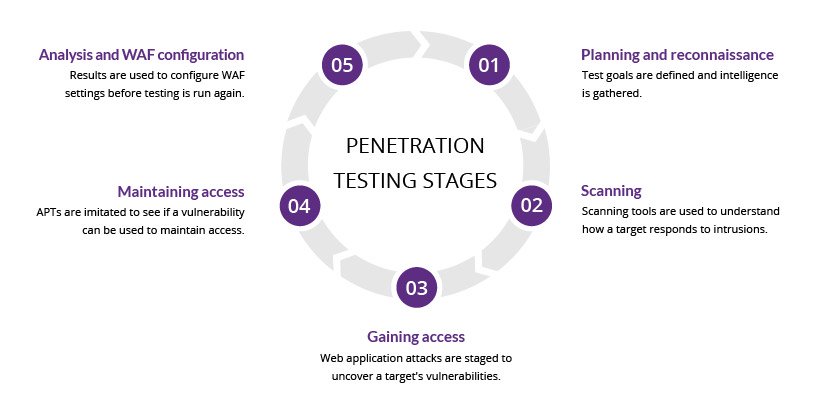Today, one of the worst things that can happen to your business is being hacked. Cybersecurity criminals are searching for any vulnerability they can find in your network, and they are persistent. Luckily, there are professionals out there that would rather utilize these skills in a positive way through penetration testing.
Penetration testing, sometimes called “ethical hacking”, is a tool that businesses can use to improve their IT security strategy. In the pen testing process, a single professional or an organization will simulate a cyberattack that checks for any and all exploitable vulnerabilities.
Once these vulnerabilities have been discovered, action can be taken. Let’s dive into the different penetration testing methods:
Penetration Testing Methods
Targeted Testing
In this method, the pen tester and the in-house security team work together. Both parties analyze one another’s movements. This training exercise replicates a scenario with real-time results from a threat’s point of view.
Blind Testing
During a blind test, the tester is given limited to no information about the organization other than the name. This allows for the IT department to identify how an actual cybersecurity breach would occur starting from ground-zero.
Double-Blind Testing
One of the most interesting penetration testing methods is the double-blind test. During this simulation, the organization’s security team has zero knowledge that a simulation is taking place. This is the most realistic method because it relies heavily on the security protocol already in place.
Internal Testing
The internal testing method simulates the occurrence of an attack happening within the company. The tester is given administrative access to different applications, bypassing firewalls. Phishing is heavily utilized in this method to obtain another employee’s credentials.
External Testing
The external testing method targets an organization by what is visible via the internet. The overall goal is to breach access and extract business critical data. This includes:
- The company’s website
- Web applications
- Domain Name Servers (DNS)
Five Stages of Penetration Testing
Accessing an organization’s network and finding cybersecurity vulnerabilities is no easy task. However, the process can be broken down into five stages:
Stage 1: Planning
The first stage’s objective is to define the overall scope and goals of the penetration test. This includes which methods will be used and which systems will be targeted. This stage is heavily reliant on information gathering to get a better grasp on how the target works and identify potential network flaws.
Stage 2: Scanning
The scanning stage of the penetration testing process covers how the organization is expected to respond to the simulated cyberattacks. This is conducted through two different types of analysis: Static & Dynamic.
Stage 3: Accessing
The third stage focuses on gaining access to the network through taking control of one or more devices or applications. To understand just how much damage the tester can cause, the tester goes about attempting to steal data, intercept traffic, or increase privileges.
Stage 4: Maintaining
Now that the tester has gained access, the next stage focuses on persistence. The goal is to replicate a threat that remains in a system for multiple days, weeks, or even months. The longer the threat has access, the more critical information the bad actor can obtain.
Stage 5: Analyzing
The final stage takes everything that has happened in the previous stages and compiles these results in an actionable report. Items that are normally included in a penetration testing report include but are not limited to:
- How difficult accessing the network was.
- The exploitable vulnerabilities.
- Data or other business-critical information obtained.
- Where and how to improve upon these weaknesses.

Uncovering Vulnerabilities
“So, what can we learn from all of this?”
After the penetration test has been completed, the report is presented to the organization. There are two actionable steps to take once the organization obtains and analyzes this report. Either the company can hand over the list of necessary updates needed to the in-house IT department or utilize an outsourced IT company. The time and effort to make these upgrades to the network depends on the vulnerability.
Feel like your business could benefit from penetration testing? Reach out to Creative Network Innovations today, and we’ll sit with your team to develop an actionable pentest plan that will test your network thoroughly. We work with numerous businesses in the Central Florida area with IT security solutions such as:
IT Security Consulting
IT Audits
Compliance & Mitigation
Data Backups
Security Assessments
Business Continuity Plans
& so much more!
Reach out today to find out where your network can be improved.


